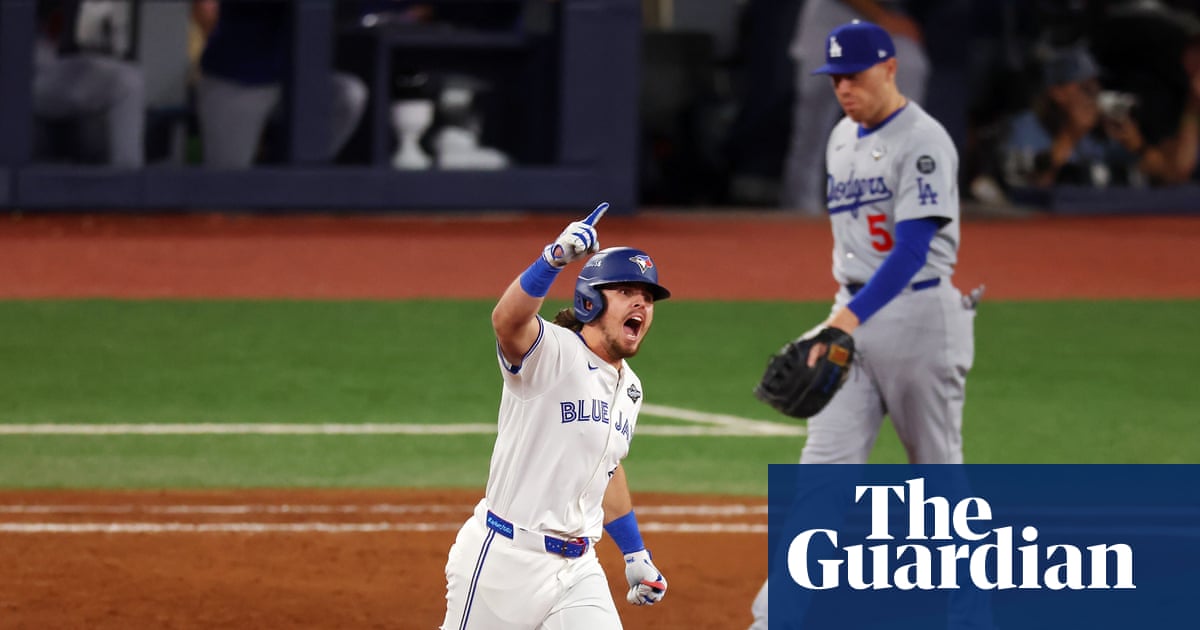On October 24, 2025, the Toronto Blue Jays marked a historic return to the World Series, hosting their first championship game in 32 years—a milestone that evoked memories of the franchise’s greatest moment on October 23, 1993. That day, Joe Carter famously delivered a walk-off home run to clinch the World Series title against the Philadelphia Phillies. In a poetic twist of fate, the Blue Jays’ first home run of the 2025 World Series came from outfielder Daulton Varsho, named after Darren Daulton, the very Phillies catcher who had faced Carter’s legendary pitch. Two innings later, Addison Barger made history by hitting the first-ever pinch-hit grand slam in World Series history, sparking a nine-run sixth inning—the highest-scoring World Series inning since 1968. This offensive eruption transformed what had been a close contest into an emphatic 11-4 victory over the Los Angeles Dodgers in Game 1.
The Blue Jays’ explosive inning was more than just a game-changer—it was a statement. Entering the series, Toronto was widely viewed as a significant underdog despite boasting impressive credentials. The Blue Jays had won a competitive division featuring three playoff teams, led Major League Baseball in team batting average, and held home-field advantage. Yet, the Dodgers were perceived as the overwhelming favorites, a powerhouse with a legacy of sustained postseason success and the highest payroll in MLB. The Dodgers came into the World Series riding a 9-1 postseason record and had allowed only five runs over their previous five games. Their rotation featured marquee pitchers like Shohei Ohtani, Blake Snell, Tyler Glasnow, and Yoshinobu Yamamoto, whose combined 2025 salaries exceeded $100 million—more than the entire payroll of five MLB teams. Additionally, the roster included former MVPs Mookie Betts, Clayton Kershaw, and Freddie Freeman, underscoring the team’s star-studded depth.
Los Angeles president of baseball operations Andrew Friedman addressed criticisms of the Dodgers’ spending spree during a pregame press conference, emphasizing the organization’s commitment to fans. “Everything for us is about pouring back into our fans and that partnership that we have with them,” Friedman said, highlighting the team’s record attendance of four million fans in 2025 and an average nightly crowd of nearly 50,000. For the Dodgers, investing heavily was a strategy to win now and ensure future success, even amid accusations that their financial dominance was “ruining baseball.”
However, on the field, the Dodgers’ financial muscle failed to secure the relief pitching that could have preserved a tight game. Despite committing over $100 million in long-term contracts to relievers during the offseason, two key bullpen pitchers—converted starter Emmett Sheehan and playoff standout Anthony Banda—struggled to contain the Blue Jays in the critical sixth inning. After starting pitcher Blake Snell, who signed a five-year, $182 million contract just months earlier, exited with the game tied 2-2, Sheehan and Banda allowed Toronto’s offense to surge. Sheehan, in particular, faltered by allowing three of the four batters he faced to reach base, setting the stage for Barger’s grand slam and the subsequent barrage of runs that put the Dodgers out of reach.
The Blue Jays’ offensive outburst was a testament to their patient, contact-oriented approach—one that contrasts sharply with the Dodgers’ power-heavy lineup. Toronto scored nine runs on six hits in that pivotal sixth inning, sending 12 batters to the plate and swinging at just three pitches, none of which they missed. By game’s end, nine different Blue Jays players had crossed home plate, reflecting a balanced and relentless offensive effort.
This offensive philosophy has been a hallmark of Toronto’s 2025 postseason run. The Blue Jays amassed 34 runs over four games in their dominant sweep of the New York Yankees in the American League Division Series and overcame a 2-0 deficit against the Seattle Mariners by outscoring them 33-17 in the subsequent five games. Unlike the Dodgers—who excelled in home runs, RBIs, and slugging percentage during the regular season—the Blue Jays prioritize making consistent contact, maintaining a team batting average over .300 in the postseason, more than 50 points higher than Los Angeles. Additionally, Toronto strikes out fewer than six times per game, a feat unmatched by any other playoff team,

